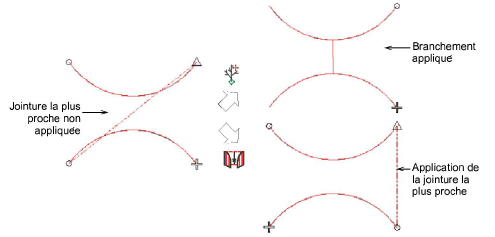
The Closest Join feature is not applicable to all objects in all circumstances. Closest Join requires the complete stitch regeneration of the selected objects – the whole object, not just connectors. Stitch regeneration has its limitations:
Recognized objects – i.e. opened from machine files – may generate poor or incorrect embroidery.
Manual (unrecognized) objects cannot be changed by stitch regeneration. Thus Closest Join will not work properly for them.
Manual stitch edits to objects will be lost.
Manually inserted machine functions may be mistakenly regenerated on the underlay.
Nested objects are not supported. They will become un-nested and placed after the object in which they were originally nested.
The Closest Join technique is not as powerful as Branching for run objects. The best it can do is swap the ends of the runs whereas Branching produces a nicely-merged double-run joined in the middle. Voir également Embroidery connections.

Tip: Obviously, it only makes sense to apply closest join to sequential objects. Any non-sequential embroidery objects in the selection will trigger an error message.